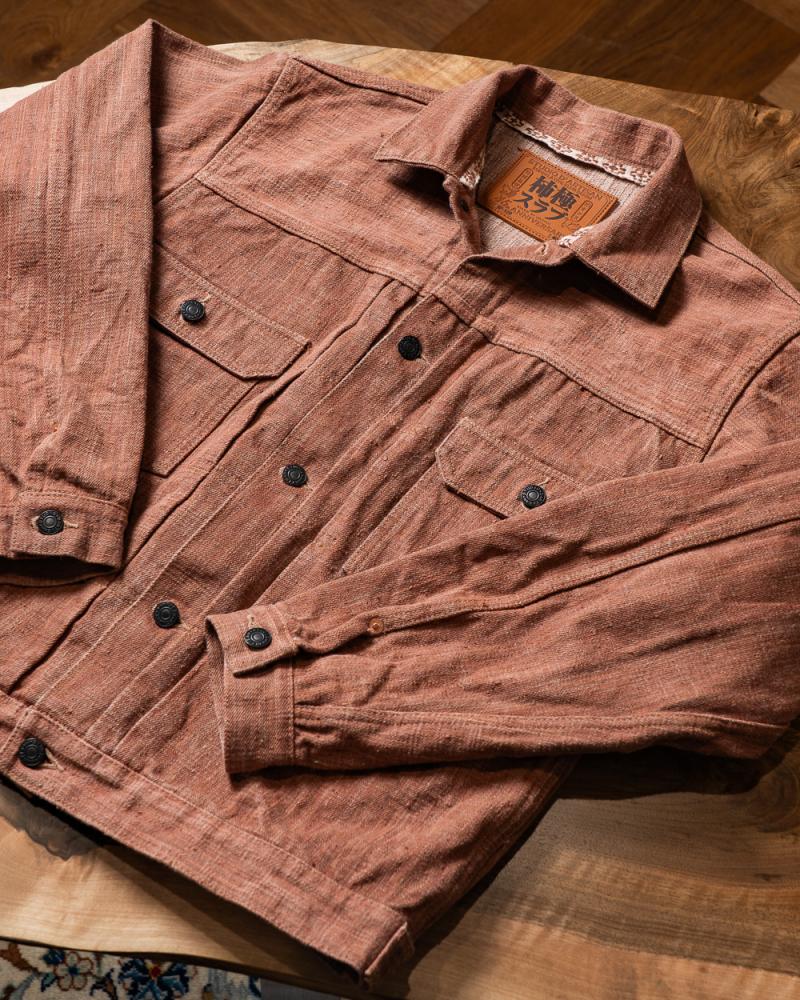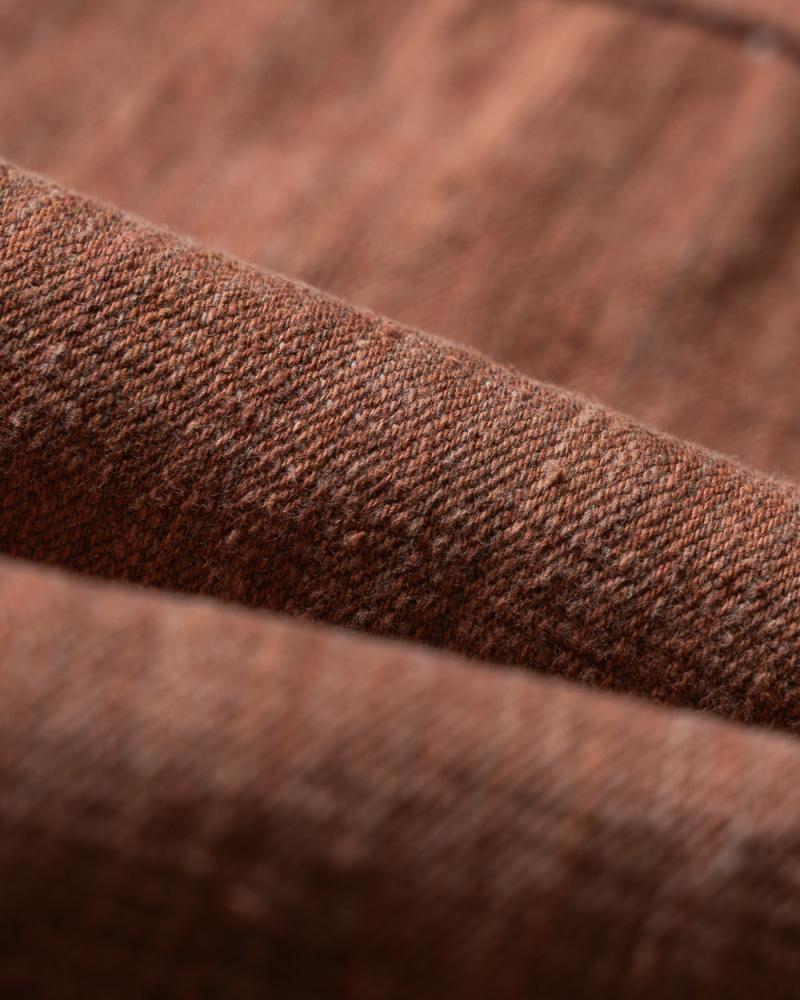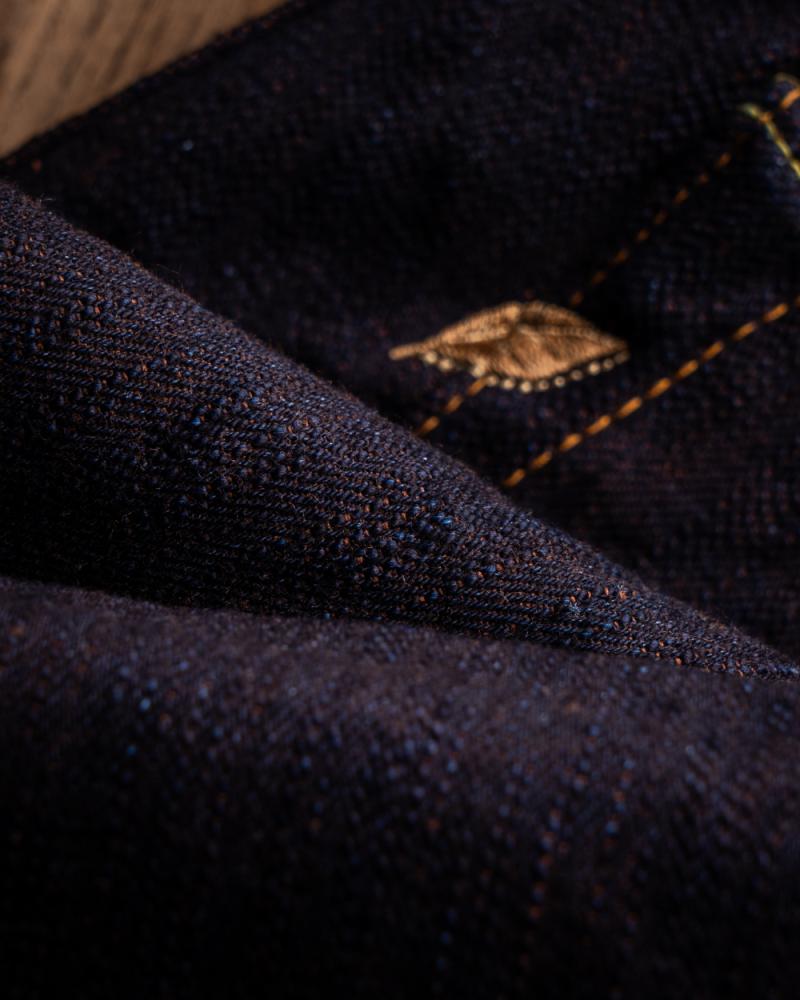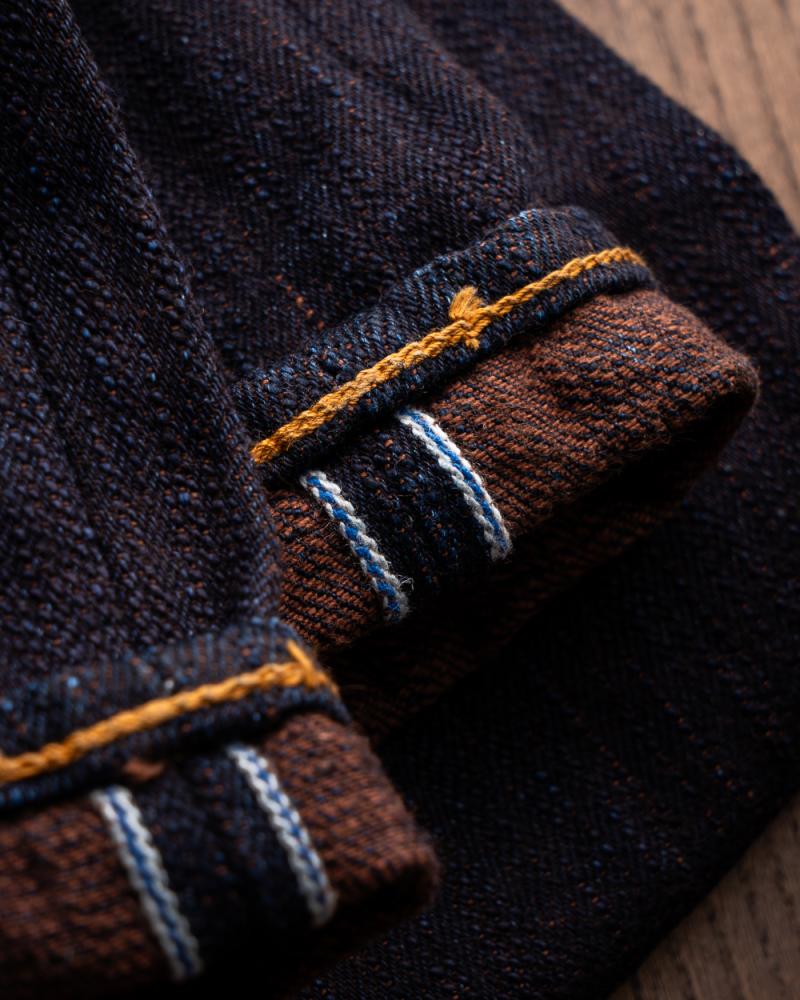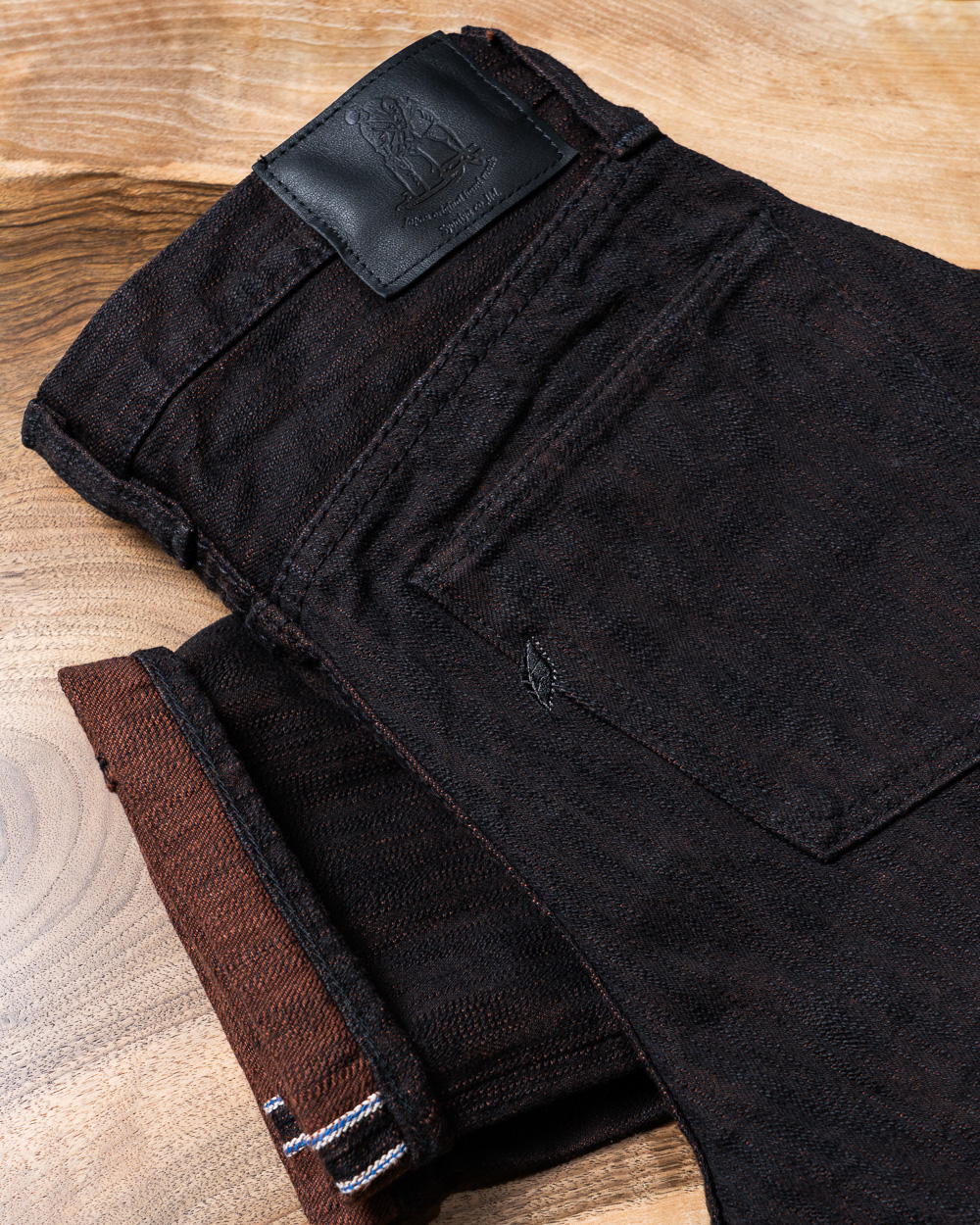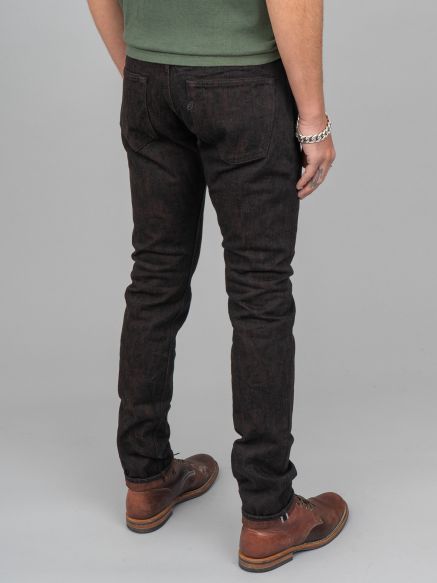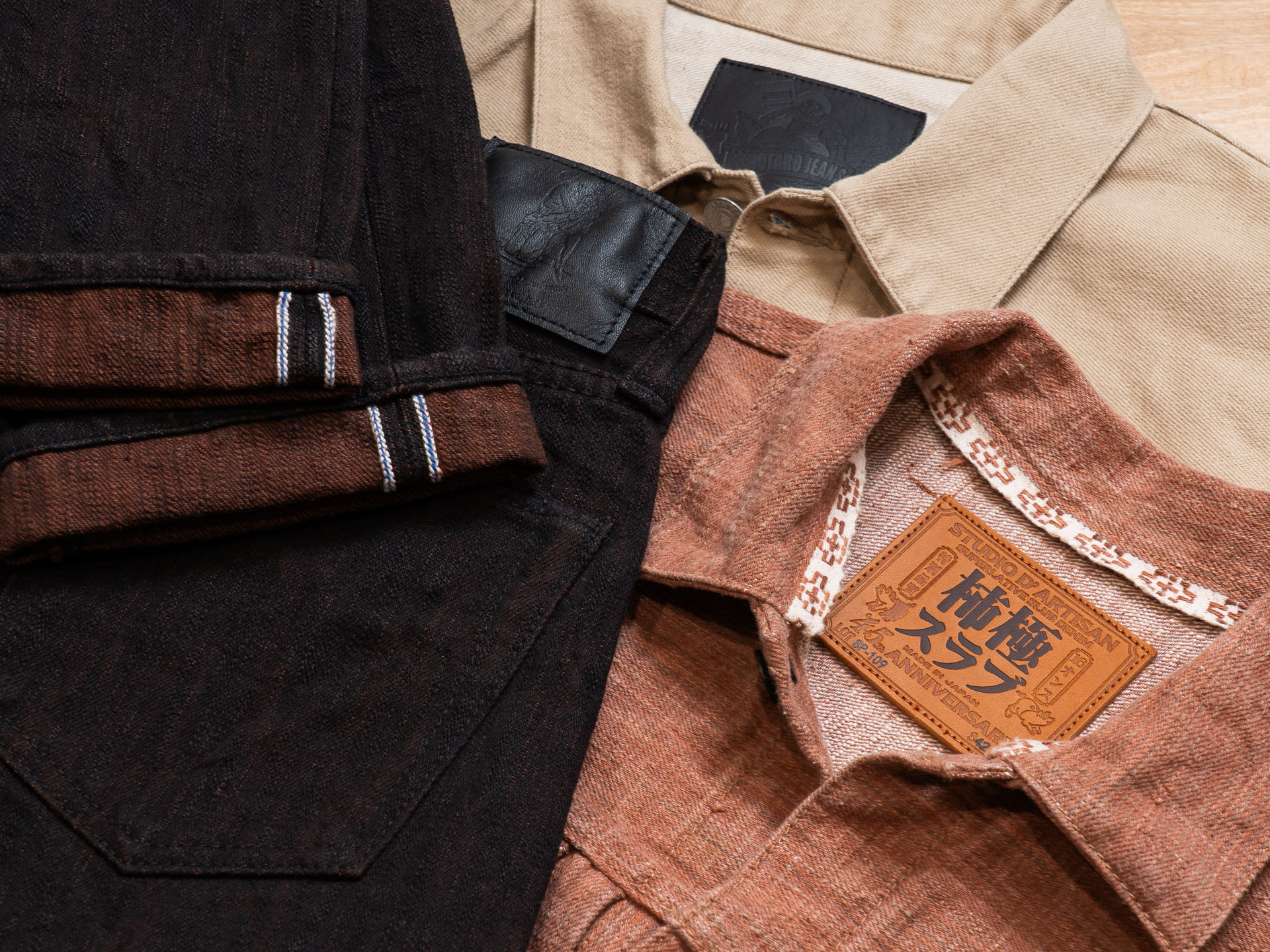
Delving into the art of Kakishibu-dyed denim
The past few weeks have seen the arrival of some exciting new pieces from Pure Blue Japan and Studio D’Artisan. Among the most expressive are their kakishibu—or persimmon-dyed—denim jackets and jeans.
Kakishibu dyeing is an ancient Japanese technique that uses fermented juice from unripe persimmons. A persimmon is an orange-looking, peach-impersonating, tomato-adjacent golden fruit—delicious when ripe, bitter beyond belief when unripe. Given that Japanese makers and artisans have been using the persimmon to dye fabric since the 13th century, we thought we’d take a moment to honour the humble little fruit. Here, we unpack just what’s so special about natural kakishibu dyeing.
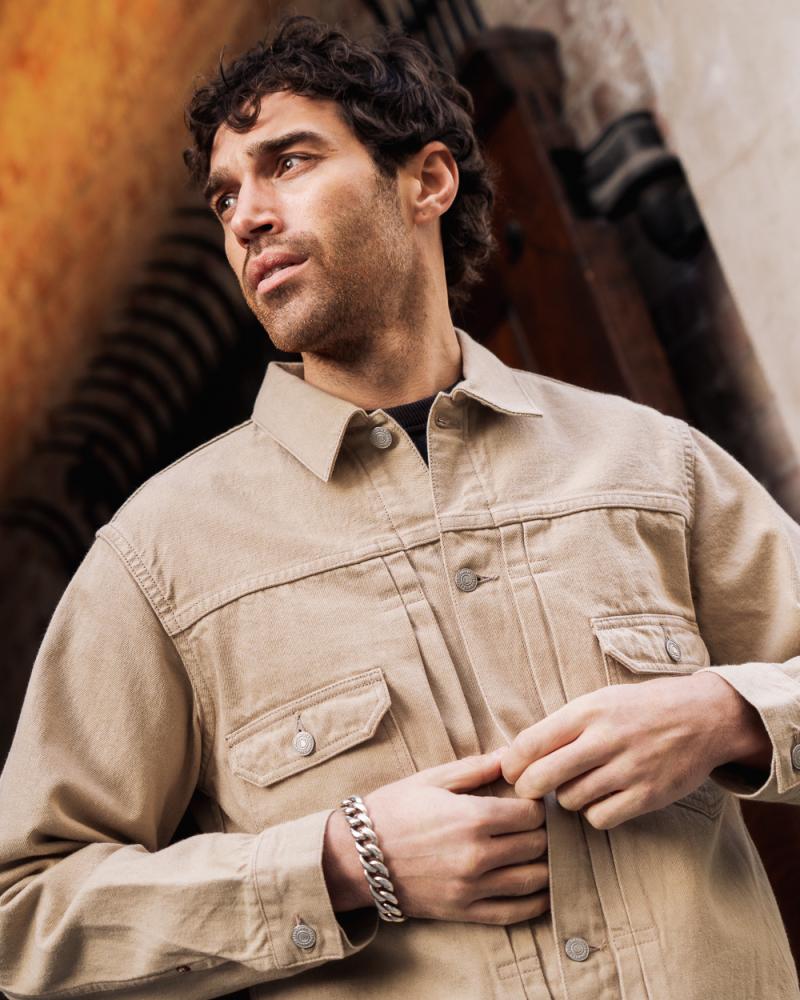

The Process Behind Kakishibu Dyeing
At the core of kakishibu denim is the persimmon fruit. The dyeing process specifically requires the astringent persimmon, known in Japan as shibu-gaki. These aren’t the sweet, soft ones you might be used to eating in autumn. These fruits are bursting with tannins—bitter, drying compounds that taste awful but make for the perfect natural dye.
1) First, extract the tannin-rich juice from the unripe fruit, then leave to ferment for months—sometimes even years. As the juice ages, it thickens and darkens. The result is a deep, earthy liquid with natural preservative and water-resistant properties. That’s kakishibu.
Once ready, the dye is brushed or dipped onto fabric by hand—a slow and meticulous process. Kakishibu is also unpredictable: no two pieces come out quite the same. Sunlight deepens the colour over time, evolving from a warm, coppery brown to rich, earthy tones unique to each wearer.
Traditionally, the kakishibu process wasn’t just for cololouring fabric. Kakishibu was also called upon to waterproof paper umbrellas, strengthen wood, and even serve as a natural lacquer. But on cloth—especially cotton and denim—it becomes something else entirely: a dye that lives, shifts, and responds to light and time.
Much like indigo, persimmon is a living colour. A powerful shade with roots in centuries of tradition and known for the way it continues to evolve.
How Do Kakishibu-Dyed Garments Age?
Much like indigo, kakishibu changes, grows, and responds to how it’s worn. Where indigo lightens and fades with time and friction, kakishibu darkens and deepens with sunlight.
For all the artisanal alchemy of kakishibu dyeing, the real magic happens once the newly persimmon dyed fabric sees sunlight. This is because UV rays react with the dye’s tannins, gradually deepening the colour. Kakishibu fabrics start pale with a faintly orange cast, but those hues shift to deep browns, rusts, and even reddish umbers over time.
Every garment comes out a little different. How long it's left in the sun, the humidity, even how many times it’s been dyed and dried—all leave their mark. And because the dye continues to evolve with wear and exposure, the garment ages beautifully. The longer you live in your garment, the more personal it becomes.
Kakishibu is time, sunlight, and patience—captured in fabric.
How Does Kakishibu Dye Interact with Denim?
In a word? Beautifully.
Typically, kakishibu is a garment-dyeing process. Cut-and-sewn shirts, sweaters, and trousers are dip-dyed wholesale in pools of persimmon pigment. The persimmon pigment creates a beautiful top layer of earthy, terracotta tones that continue to evolve.
Things get interesting when you incorporate persimmon-dyed yarns into the weave of—you guessed it—denim. When applied to indigo or black denim, kakishibu dye adds a whole new dimension to the fabric, creating a rich interplay of living colours.
The heavy cotton yarns absorb the kaki tannins differently than lighter fabrics—more slowly, more stubbornly. This means the initial colour tends to be more subtle: muted browns and coppery undertones sit beneath the black or indigo dyes.
Because denim is typically so dense, the process requires multiple rounds of hand-dyeing and sun-drying. This layering creates depth—you get highs and lows in the fabric, and the patina evolves as the denim fades and breaks in. Over time, the kakishibu can even influence the fade pattern, tinting wear areas with reddish-brown highlights.
The result? A denim that tells a story not just through wear, but through sunlight and time. It’s like watching autumn slowly settle into a pair of jeans.
Just as time brings contrast and character to indigo-dyed denim, so too does sunlight deepen and intensify persimmon dye—bringing out richly earthen, rusted tones. Just as one lightens, the other deepens. Wear creates a dialogue between dye and denim: high spots lighten, shadows deepen.
Kakishibu Selvedge Denim at Rivet & Hide
At its heart, kakishibu dyeing is about patience, imperfection, and transformation. This isn’t a quick-fix, throw-it-in-a-vat style of dyeing. Kakishibu is a slow, sunlight-reactive, hands-on process. A traditional technique that lets nature’s organic tannins do the heavy lifting, providing rich, earthy pigments that enhance a garment’s charm and allure over time.
Kakishibu is an ode to impermanence, slow change, and evolving beauty. And that’s exactly what makes it so magical.
Shop our selvedge denim collection.

